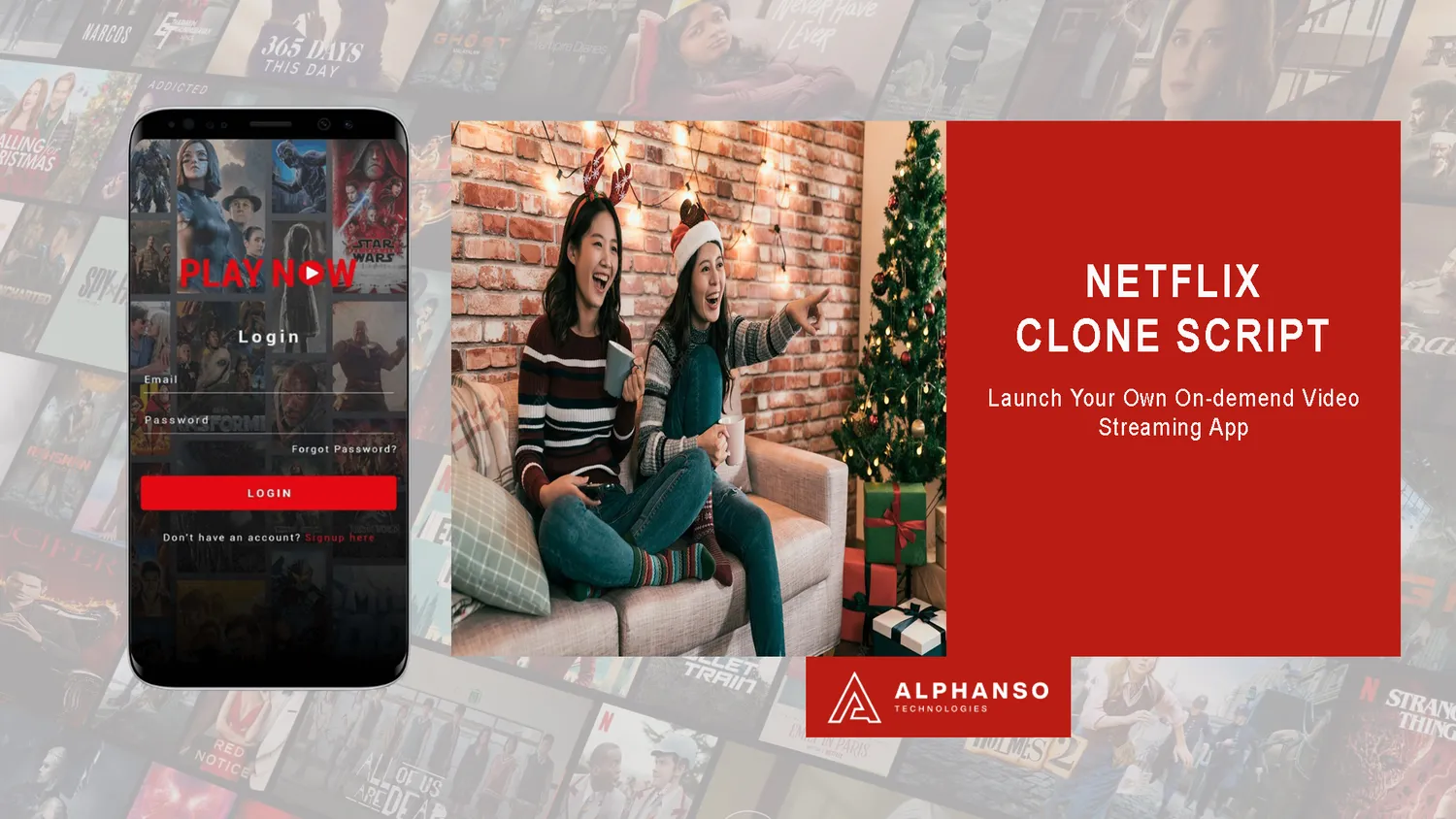With the global boom in video-on-demand (VOD) services, many startups and media companies are launching their platforms using Netflix clone scripts. These clones replicate the core functionalities of Netflix — from seamless video playback to personalized recommendations — but under the hood, what makes them run smoothly? Let’s dive into what technology a Netflix clone uses for streaming.

1. Content Delivery Network (CDN)
A key component of any streaming platform is a Content Delivery Network. Most Netflix clone apps use third-party CDNs such as:
- Amazon CloudFront
- Akamai
- Cloudflare
- Google Cloud CDN
These CDNs cache and distribute video content across global servers, ensuring low latency and smooth playback for users regardless of their location.
2. Adaptive Bitrate Streaming
Like Netflix, a well-built clone uses adaptive bitrate streaming (ABR) to dynamically adjust video quality based on the user’s internet speed.
- Common streaming protocols used: HLS (HTTP Live Streaming) and MPEG-DASH.
- Multiple versions of the same video (at different resolutions and bitrates) are encoded.
- The player automatically switches between streams to prevent buffering.
3. Video Encoding & Transcoding
To ensure compatibility across all devices and browsers, Netflix clone platforms rely on video encodingand transcoding tools such as:
- FFmpeg – for converting raw video into multiple formats
- AWS Elemental MediaConvert – for high-scale cloud-based encoding
- Zencoder – for quick, API-driven video processing
Popular video codecs used: H.264, H.265 (HEVC), and VP9 for better compression and high-quality playback.
4. Backend Development
The backend is the engine that powers the platform’s logic and user data. Most Netflix clones are developed using scalable and modular backend stacks like:
- Node.js, Python (Django/Flask), or PHP (Laravel)
- RESTful APIs or GraphQL for data communication
- Microservices architecture for handling modules like user accounts, subscriptions, content management, and playback
Databases used include:
- MongoDB or PostgreSQL for storing user data and media metadata
- Redis or Memcached for caching frequently accessed data
5. Frontend & Video Players
The front end handles how users interact with the platform. Netflix clones often use:
- React.js, Vue.js, or Angular for responsive, modern web interfaces
- Native apps for Android (Kotlin/Java) and iOS (Swift)
- HTML5 video player, or customized players like Video.js, Shaka Player,or ExoPlayer for Android
These players support full-screen playback, subtitles, speed control, and adaptive bitrate streaming.
6. Digital Rights Management (DRM)
To secure content and prevent piracy, DRM integration is critical. Common DRM systems used in Netflix clones include:
- Google Widevine
- Microsoft PlayReady
- Apple FairPlay
These technologies ensure that only authorized users can stream licensed content.
7. Cloud Hosting & Scalability
Scalable cloud infrastructure allows Netflix clones to handle large user volumes and content libraries. Popular choices include:
- Amazon Web Services (AWS)
- Google Cloud Platform (GCP)
- Microsoft Azure
These platforms offer auto-scaling, global storage, serverless functions, and robust security features.
8. Monetization Modules
Most Netflix clones are built with integrated monetization systems:
- Subscription-based (SVOD) using tools like Stripe, Razorpay, or PayPal
- Ad-based (AVOD) integration with ad servers or SDKs
- Transactional (TVOD) where users pay per view
Conclusion
A fully functional Netflix clone relies on a combination of cutting-edge streaming technologies, cloud services, and robust backend systems to deliver high-quality video streaming content across devices. By utilizing modern tools such as adaptive bitrate streaming, CDNs, and secure DRM systems, these platforms can provide a Netflix-like experience tailored to different business models.
If you're planning to build or invest in a Netflix clone, understanding its technological foundation is essential to ensuring performance, scalability, and user satisfaction.